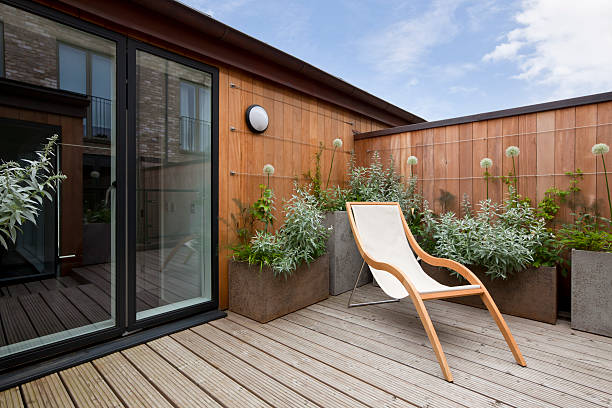How much of an improvement or a burden will your new wood deck be? The answer is dependent on the sort of decking wood that you pick for your project. In addition to being resistant to rot and pests, pressure-treated pine can be ugly due to its green or yellow tint, and the chemicals it contains are potentially hazardous. Wood decks and porches with visually appealing but still sturdy wood floors, railings, and steps make for a safer and more pleasant outdoor living environment. Keep the pressure-treated wood for the frame and supports aside for the time being.
Some of the most suitable woods for decking, porches, and horizontal deck railing ideas are listed below.
Ipé
Ipé is a beautiful South American hardwood. Toxin and rot resistance is great, and the wood is so hard that it is practically impossible to burn in a fire (Forest Service Products Laboratory). Hard to work with, yet lovely when paired with stone or slate accents for a very distinctive aesthetic.
It is contentious to use rainforest woods in underdeveloped countries. For your wood deck, pick ipé that has the Forest Stewardship Council (FSC) trademark, which guarantees that the wood was collected in an environmentally friendly manner.
Western Red Cedar
How will you decide whether or not to cover your wood deck? This means the wood you choose should have a high level of decay resistance, and cedar is one of the best options available. Its color is reddish-brown. Western red cedar In just a few years, the cedar turns a silvery grey color. Even though it splinters easily, this softwood keeps up well in rain, sunlight, heat, and cold. Use a penetrating stain on your cedar deck to enhance its appearance and increase its long-lasting performance.
Redwood
Redwood, like cedar, is a soft yet strong material that matures to a pleasant grey color as it ages. A redwood deck will not decay, but it will darken if exposed to dampness for an extended period. Use a clear sealer on the floor of your redwood deck or porch to keep the gorgeous crimson hue from fading.
A group of lumber firms in the American northwest, the California Redwood Association (CRA), is represented by the organization. The Forest Stewardship Council has verified CRA timberlands as being well-managed, as has been the case with other responsible wood harvesters (FSC).
Mahogany
Mahogany is a tropical hardwood with a tight grain that is resistant to pests and decay. Treat it with marine oil, and it will take on the appearance of teak. Alternatively, you might allow your mahogany deck to age to a silvery tone. There are various variations to pick from, and each has its own set of advantages and disadvantages. No matter the sort of mahogany you choose, make sure it bears the “FSC” certification to ensure that rainforests have not been cut in an unsustainable manner.
The term “Philippine Mahogany” does not refer to genuine mahogany. The term “Philippine” refers to a type of wood from Southeast Asia that is sold in North America under the trade name Shorea. This type of wood is known as “Pacific Maple” in Australia. Nonetheless, Philippine Mahogany exhibits many of the desirable characteristics of genuine mahogany.
Tigerwood
Tigerwood, also known as Gonçalo Alves, is a South American wood. When used for wood decks, the color and grain can vary from board to board, making for an interesting and rich appearance when used as decking. This wood can present both hardness and softness on a single board, making it challenging to handle for some installers. Brazilian Koa Wood has been selling this product since 1992, most recently as Brazilian Koa. Tigerwood decking is marketed under the brand name Tigerwood. Even though this exotic wood is known by various names, it is not Zebrawood, which is another striped-like product with a similar appearance. Tigerwood, also known as Astronium graveolens by the United States Forest Service, is commonly used to carve knife handles and archery bows, among other things.
Other Considerations for Wood Decks and Porches
When picking wood for wood decks and porches, position and design must be disregarded. Because any wood is available to purchase, the climate in which you live should affect your decision. In your location, look for a contractor that has worked with these types of wood before. Also, whether or not the deck is covered and which way it faces may make a difference. Take advantage of internet resources such as the wood database and organizations like the American Wood Council to broaden your knowledge of available possibilities.
You can use the Janka hardness test to find out how hard a piece of wood is. Harder wood has a lower number, so you can compare among species.
Wood Pretenders
Although wood is a natural substance, it does require sealing to maintain its color and gloss. You might consider using a “mock wood” material such as a plastic polymer or a wood-polymer hybrid for your wood deck. These synthetic and composite materials are extremely impenetrable to insects and decay. Even modern materials, however, require upkeep to retain their wood-like appearance. Unless painted or stained opaquely, mock woods will always appear artificial.

